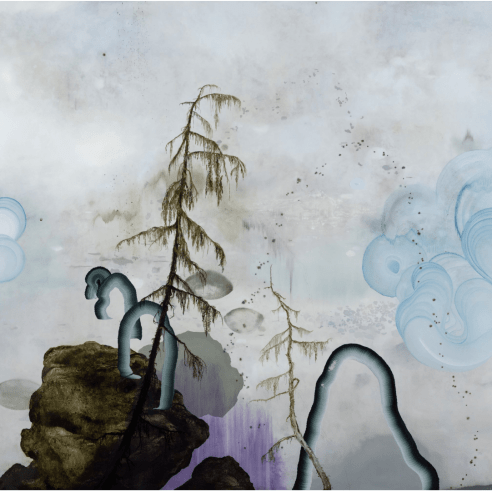
At the New Frick, Magicians Come Out of the Woodwork
Textile weavers, tassel-makers, lighting restorers, cabinet makers and muralists forged new traditions at the sumptuous Beaux-Arts museum.
Welcome to the latest installment of “This Old House,” the Henry Clay Frick mansion edition. The sumptuous 1914 Beaux-Arts residence is reopening to the public on April 17 after a $220 million, four-year renovation, and with a series of member events this week. For the first time in 90 years, visitors will be able to ascend the Grand Staircase to experience the family’s private rooms on the second floor, the velvet ropes whisked away.
The makeover will allow museumgoers to reunite with the Rembrandts, Van Dykes, Vermeers, Turners, 16th to 18th century furnishings and dine at the Frick’s first-ever cafe, opening later this spring.
But less evident is the A-team of craftspeople forging new traditions at the Frick: textile weavers, lighting restorers, tassel makers, woodworkers, glass artisans and painters, from Lyon, France, to Gowanus, Brooklyn, whose skills have brought fresh energy and sparkle to an aging mansion.
The Frick’s interiors, including the Garden Court and the Oval Room, were largely the work of the architect John Russell Pope, who was tasked with transforming the house into a museum in the 1930s. The reimagining this time around was similarly daunting.
“Mr. Frick had the best materials and craftsmanship, so we had to come up to that level of quality,” said Ian Wardropper, the Frick Collection’s longtime director, who recently retired. And it was impossible to restore just one gallery. “It’s like if you redo the living room and suddenly your bedroom looks shabby,” Wardropper said. “My job is to preserve what everyone loved about the Frick, but with new luster and polish.”
Fine craftsmanship informs the expansive new addition by Selldorf Architects with Beyer Blinder Belle, who took their cues from the historic house. “The sheer intelligence of craft at the Frick is inspiring,” said Annabelle Selldorf, the firm’s principal. “We were committed to using the same materials and details in a slightly different way, to express the character of our time.”
Here are some of the stellar artisans whose talents are on view.
DARREN WATERSTON, MURALIST
Darren Waterston, 59, whose luminous murals enliven the new cafe, made his first pilgrimage to the Frick as a 19-year-old art student from California. He credits the sight of “St. Francis in the Desert” with his decision to become an artist. “It was ‘Dear God, I have to see this painting!” he said of Giovanni Bellini’s Renaissance masterpiece.
The imagined landscapes and palette of Bellini inform Waterston’s new murals, which are meant to be “in conversation with the collection,” he said. The main frieze, “Arcadia,” is a fever-dream that unfolds across the walls like a Japanese screen. They also nod to another artist Waterston admires, the printmaker Hercules Segers (circa 1590-1638), known for his surreal and mysterious etchings of the natural world.
Xavier Salomon, the Frick’s chief curator, has admired Waterston’s work since “Filthy Lucre,” the artist’s renegade reinterpretation of James McNeil Whistler’s 19th-century Peacock Room as a decadent ruin, commissioned in 2013 by the Massachusetts Museum of Contemporary Art.
Waterston made a point of visiting the Frick Collection every year from his home on the West Coast. Fifteen years ago, he moved to New York. “I thought ‘Oh my God — I’m in the same city as the Frick!” he said.
